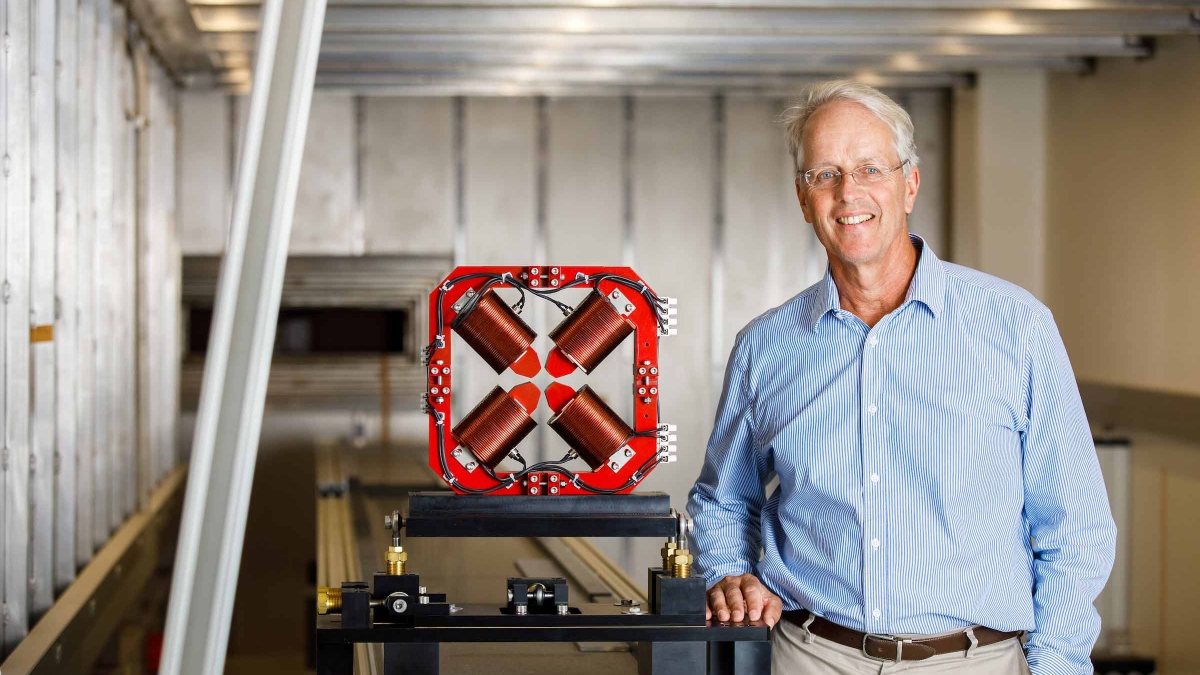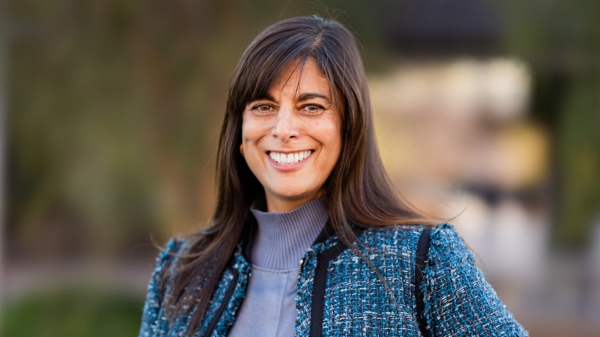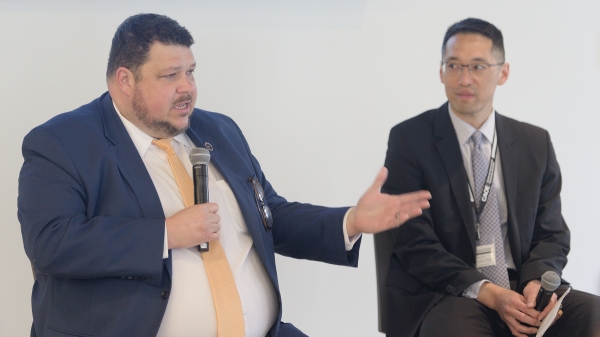Blending passions to craft a scientific career

William Graves stands next to the compact X-ray light source at ASU's Compact X-ray Free Electron Laser Labs at the Biodesign Institute.
Editor's note: This is the second installment of a five-part series profiling the researchers who work on ASU’s compact X-ray free electron laser. Read the other installments: Q&As with Regents Professor Petra Fromme, CXFEL Labs Director Robert Kaindl, Assistant Professor Sam Teitelbaum and CXFEL Chief Engineer Mark Holl.
William Graves’ two passions are enjoying the natural world and building complicated machines. So naturally, he’s a key player in Arizona State University’s efforts to build complex, compact X-ray equipment that will delve into nature’s mysteries.
Graves, the chief scientist of ASU’s Compact X-ray Free Electron Laser (CXFEL) Labs at the Biodesign Institute, grew these passions at a young age in the woods and waters near his childhood home and in his metal shop class in high school.
Nowadays, when he’s not busy working at the CXFEL Labs, Graves still feeds those passions by gardening, exploring the outdoors and tinkering with various engines.
“I troubleshoot and fix a lot of stuff from cars to boats to particle accelerators. They're all the same in a way,” says Graves, who is also an associate professor in ASU’s Department of Physics.
Below, Graves answers questions about the joys and challenges of building the world’s first compact X-ray free electron laser and its compact X-ray light source.
Question: What is your role at CXFEL Labs, and what do you do on a day-to-day basis?
Answer: I am the chief scientist of CXFEL Labs. My job is to lead the team that conceives, then designs, builds and commissions new X-ray light sources. So far, we have built the compact X-ray light source (CXLS) over the last five years and are in the middle of commissioning it. We involve many students in these activities, and on a daily basis, I am training and directing the activities of five to 10 undergrad and grad students who are very active in running the particle accelerator and lasers that make up CXLS.
A: What are you known for?
Q: I design and build what are called high-brightness electron accelerators. These are the accelerators that power all of the new X-ray free electron lasers around the world. I am known for technical innovations that greatly shrink the size and cost of these machines.
Q: Who has had the biggest influence on you as a person?
A: My father set a great example; he was a nature lover first, chemical engineer second and loved his family dearly. My siblings and I had a great childhood out in the wild.
Q: What has been one challenge in the CXLS project, and how have you and the team overcome it?
A: Most new particle accelerators are designed and built at national labs with large staffs of scientists and engineers who are experts in the many technologies. When I started at ASU in 2015, we had no expertise in the needed areas. Since then, we seeded and grew our team from scratch, hiring and training staff, faculty and students to build up a world-class group of experts. The key ingredients have been patience, enthusiastic participation from employees and students, and strong support from Biodesign leadership and Knowledge Enterprise that provided the time and resources to see this effort through.
Q: Why is ASU the right place to build these instruments?
A: ASU faculty have pioneered science at major X-ray free electron laser (XFEL) facilities around the world that have had huge impact. But all of those facilities are located at national labs. We will be the first university to host a compact XFEL on campus, providing our faculty with a unique resource that brings their science home. We believe this is the start of a new paradigm that will enable many institutions to follow in our footsteps, providing novel instruments for scientific breakthroughs. Our culture of innovation puts us out front in these new fields.
Q: What were pivotal moments in your career that led you to where you are today?
A: My career has had three phases lasting 10 years each, give or take, that were important to where I am today: early career at Brookhaven National Lab working in a group with deep expertise in the physics of electron beams and X-ray emission, mid-career at MIT designing major X-ray light sources around the world, and finally my current late career overseeing ASU's effort to develop novel compact light sources.
Q: What motivates and excites you most about your work?
A: I love applying physics to complex instruments to come up with new scientific capabilities. It is so exciting to see our predictions and designs come to life.
Q: What potential application or aspect of the CXLS/CXFEL is most exciting to you?
A: We believe we will have full control of X-ray laser properties for the first time, producing beams that can probe the quantum limits of nature. This will be a boon to a wide range of imaginative scientists working to unlock the secrets of biology, chemistry, physics and new materials.
Biodesign Institute and its CXFEL Labs are partially supported by Arizona’s Technology and Research Initiative Fund. TRIF investment has enabled hands-on training for tens of thousands of students across Arizona’s universities, thousands of scientific discoveries and patented technologies, and hundreds of new startup companies. Publicly supported through voter approval, TRIF is an essential resource for growing Arizona’s economy and providing opportunities for Arizona residents to work, learn and thrive.
More Science and technology

The science behind chronic stress
Stress comes in many shapes and sizes. There’s the everyday stress of preparing for a final exam or being stuck in traffic. And…

ASU planetary scientist to be inducted into the National Academy of Sciences
The National Academy of Sciences is inducting School of Earth and Space Exploration Director Meenakshi Wadhwa into the 2023 class…

Unlocking the potential of AI for homeland security
“Can we do what we're doing now cheaper, more efficiently, more effectively?” Adam Cox, director in the Office of Strategy and…